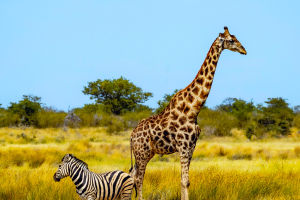Have you ever wondered how elephants—those huge animals made of trillions of cells—rarely get cancer?
With such large bodies and long lifespans, they should logically face a much higher risk of the disease. Yet studies show that elephants have a far lower cancer rate than humans.
How is that possible? Today, we'll explore the incredible genetic secret behind this mystery—and what it could mean for us.
Understanding the Cancer Puzzle
We all have cells in our bodies that can divide and grow. But every time a cell divides, there's a chance for mistakes—mutations—that can lead to cancer. The more cells and the longer we live, the higher the chances. That's why larger animals like elephants should, in theory, have higher cancer rates. This is known as Peto's Paradox, named after the scientist Richard Peto, who first pointed it out in the 1970s.
But here's the strange part: elephants hardly ever get cancer. In fact, studies from the University of Utah and Arizona State University show that less than 5% of elephants die from cancer, compared to over 20% in humans.
So, what's going on?
The Power of Extra Genes
We humans all have a gene called TP53. This gene helps repair damaged DNA or tells the cell to self-destruct if it's beyond repair. It's a natural defense system against cancer. Most people have only one copy from each parent—so two copies in total.
Elephants? They have 20 copies of TP53.
Yes, twenty! This means their bodies are equipped with a powerful team of cancer-fighting proteins. When a cell in an elephant starts to behave abnormally, these extra copies act fast—either fixing the damage or wiping out the risky cell entirely.
This discovery, published in The Journal of the American Medical Association (JAMA), has caught the attention of cancer researchers around the world. If we could find a way to mimic or strengthen the TP53 function in humans, it might lead to new treatments—or even ways to prevent cancer altogether.
More Than Just TP53
While TP53 plays a big role, that's not the only trick elephants have. Scientists also found that elephants have a special gene called LIF6, sometimes nicknamed the "zombie gene." It was once inactive in most animals, but in elephants, it came back to life through evolution.
When triggered, LIF6 tells damaged cells to destroy themselves quickly before they turn dangerous. This adds a second layer of protection on top of TP53. It's like having both a security camera and an emergency shutdown system at the same time.
Together, these genetic tools help elephants stay healthy despite their massive size and long lifespans.
What It Could Mean for Us
So how does this elephant science help us humans? Researchers are now studying whether we can boost TP53 activity in human cells or safely develop gene therapies inspired by elephant DNA. Of course, it's still early, and many steps lie ahead, but the hope is very real.
Dr. Joshua Schiffman, a pediatric oncologist and researcher who worked on elephant cancer genetics, said, "Elephants may hold the key to unlocking new ways to prevent cancer in humans. Nature has already solved the problem—we just need to understand how."
It's a beautiful example of how studying other species can help us protect ourselves.
What Can We Learn from Elephants?
Besides their strength and grace, elephants are now becoming teachers in the world of science. Their ancient genetic wisdom, shaped by evolution, could open doors to medical breakthroughs we never thought possible.
But even as science moves forward, we should remember that protecting elephants in the wild is also protecting the secrets they carry. Every elephant is not just a giant of the animal kingdom—but possibly a key to saving lives.
Have You Ever Thought About This?
Did you know elephants had such powerful "built-in" defenses? What do you think about using this knowledge to help fight cancer in the future?
Let's talk about it—drop your thoughts, questions, or curiosity. Together, we can keep learning from nature's quiet geniuses, one discovery at a time.


